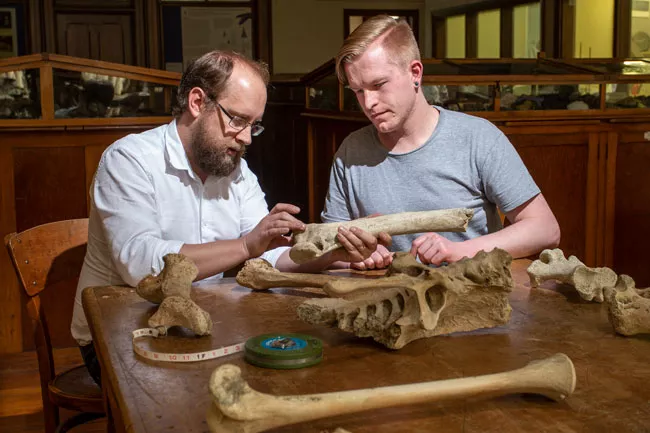Climate change refers to long-term changes in temperature and weather patterns. These changes may be natural, however, it is widely believed that human activities are the main cause of climate change. Climate change is not just affecting people. Wildlife and ecosystems throughout the planet can also undergo major, often catastrophic, changes. Temperature rise may lead to the collapse of fragile ecosystems and mass extinction events This has led many scientists to study how species will respond to climate change

According to a study by the University of Otago, ancient MOA DNA reveals insights into how species cope with climate change. By analyzing the ancient DNA of the extinct Eastern MOA, researchers from the Department of zoology found that the distribution of this huge bird changes with the warming and cooling of the climate.
According to the lead author Dr Alex verry, in the warmer Holocene era, the species was distributed in the eastern and southern parts of the South Island, but at the peak of the last ice age about 25000 years ago, the species was limited to the southern part of the South Island. In contrast, the heavy foot MOA withdrew from the southern and northern parts of the South Island, while the highland MOA occupied four separate areas.
Dr. verry said: "the response of the eastern MOA has had an impact on its population size and genetic diversity - the last ice age caused a significant genetic bottleneck, which means that its final genetic diversity is lower than that of other MOA birds living in the same area."
This study was published in [biology bulletin] on May 11, 2022( https://royalsocietypublishing.org/doi/10.1098/rsbl.2022.0013 ) 》In the journal, it is the first time to use high-throughput DNA sequencing technology to sequence millions of DNA fragments at the same time to study ostrich at the population level. These findings highlight how past climate change has affected species in different ways, and the "one size fits all" model is unrealistic.
"This makes us wonder what will happen to species when they try to adapt to climate change today and in the future, and whether they will also try to migrate to new areas to survive?"
"For some species, this will be impossible. Some species will run out of space. For example, alpine species will have to move up, but they can only go so far until there is no 'up'," he said
Dr. NIC rawlence, co-author and director of the paleogenetics laboratory at the University of Otago, said the study was a rare example of the impact of past climate change on New Zealand's extinct megafauna. It also shows how to use fossil remains and museum collections to answer new questions about the past.
"This has indeed brought the power of paleogenomics to New Zealand's research problems, and most of the previous research and interest have focused on Eurasian or American species." "We are really starting to build capacity for this research in New Zealand," he said
The research was supported by the Marsden foundation of the Royal Society of New Zealand and the University of Otago.